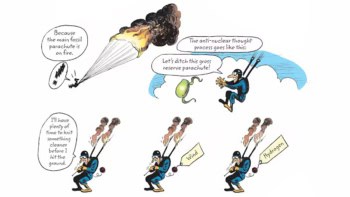
Tropical cyclones over the western North Pacific underwent a “regime shift” in their destructive potential in 1998, according to researchers in China.
In their study of the years 1979 to 2016, the destructiveness of the cyclones increased rapidly after 1998, rising 97% from the interval 1998–2003 to 2012–2016.
The researchers believe the shift results from the impacts of the strong La Niña weather phenomenon of 1998–2001, and the strong El Niño in 2014–2016.
Tropical cyclones in the western North Pacific have caused immense damage, disruption and loss of life. In 2013, for example, Typhoon Haiyan became the deadliest Philippine typhoon on record, killing over 6,000 people. Haiyan also holds the joint record for strongest tropical cyclone to hit land.
Many people fear that tropical cyclones are becoming more destructive, but studies have shown mixed results. In 2005, for example, Kerry Emanuel of the Massachusetts Institute of Technology, US, found an upward trend in cyclone destructive potential over the western North Pacific and North Atlantic basins since the mid-1970s. In 2015, on the other hand, I-I Lin of the National Taiwan University and Johnny Chan of the City University of Hong Kong found a downward trend of destructive potential over the western North Pacific for the past two decades.
Both Emanuel and the Lin and Chan team used a concept called the Power Dissipation Index (PDI), invented by Emanuel, to describe a tropical cyclone’s destructive potential. The PDI combines a cyclone’s wind speeds and duration to quantify its potential threat.
Jianjun Xu and colleagues at the Guangdong Ocean University re-examined the characteristics of tropical cyclones over the western Northern Pacific to determine whether there are distinct trends over the long-term. Between 1979 and 1997, they found a negligible increase in PDI, but from 1998 to 2016 there was a “remarkable increase”, mostly due to increased cyclone intensity.
Xu and colleagues do not believe the results contradict the earlier study by Lin and Chan, however. “This mutation of PDI around 1998 was not noted in their work due to the different research period [they covered],” says Xu.
Xu’s team found that the El Niño Southern Oscillation affected PDI in an inter-annual pattern throughout the period of the study. The Pacific Decadal Oscillation, on the other hand, modulated PDI only after 1998 and in an inter-decadal pattern. Yet it was a combination of a stronger La Niña and El Niño that led to the distinct regime shift.
The results do not suggest whether tropical cyclones will become more or less destructive in the future, but Xu and colleagues hope to investigate this next. “If the tropical belt expands further in the future with global warming, [that] may cause the potential damage of tropical cyclones to increase in higher latitudes of the western North Pacific region,” says Xu.
The team reported their results in Environmental Research Letters (ERL).

